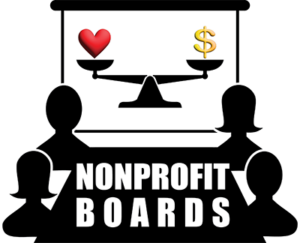
Many aspects of a governor’s role depends on the size and maturity of the nonprofit organization. For very small nonprofit organizations, governors may also serve as principal staff handling many day-to-day functions. As a nonprofit grows and acquires professional staff, governors should, but may not, move to an oversight role while retaining some involvement in service delivery or “back office” (e.g., accounting and human resources) functions. At a full level of maturity, governors should be engaged primarily in oversight of professional staff.
Professional Associations
Reflecting Miles Law (where you stand depends on where you sit), my perspective regarding challenges and responsibilities of governors is based largely on experiences serving on eleven governing boards of professional associations.
Professional associations are quite different from “cause” nonprofits addressed in previous blogs. For engineering professional societies, Drucker’s changed human being is a member of the professional society and/or a member of the profession the society represents. A major difference in professional societies and, say, the Salvation Army, is that the primary source of revenue comes from society members, not private gifts and donations.
Professional associations provide leadership and expertise development services for their members. The American Society of Association Executives is an association serving, as its name implies, executives of associations. A more narrowly focused association is the Council of Engineering and Scientific Society Executives.
Furthermore, governors of many nonprofits come from diverse settings with varied educational backgrounds and experiences. With professional associations, a governor’s employment history is highly correlated with the focus of the association, e.g., governors of engineering professional societies are generally practicing engineers or engineering graduates.
Governors of professional associations are typically representatives of constituent parts of the association. A key challenge in this arrangement is ensuring governors think about the needs and benefits of the professional association as a whole and not just the portion from which they’re the representative.
Also, even for very large professional associations, governors may play a direct role in day-to-day activities of the association. For example, Don Greene, executive director of the Institute of Industrial and Systems Engineering (IISE), reminded me governors of professional associations “are truly working Board members with specific responsibilities.” He pointed out IISE’s Senior Vice President (SVP) responsible for continuing education meets regularly with editors of its journals and “is deeply involved in setting publication policies and guidelines.” After enumerating responsibilities of other SVPs, he noted IISE depends on the expertise of its governors in areas for which full-time staff are not qualified to make decisions on behalf of its membership.
A key challenge facing many professional societies is declining membership over the past decade. The decrease is due partially to the increased challenge of providing unique information resources. The rise of internet-based services such as LinkedIn reduced the unique ability of professional associations to connect persons in similar industries looking to form communities through which they shared information, expertise, and employment opportunities,
The COVID pandemic further exacerbated challenges faced by professional associations. It caused leaders of such organizations to face situations they never anticipated when they signed on to be leaders. Associations dependent on members’ disposal income faced dramatic reductions in revenues. Attendance at conferences and sales of publications decreased, as did memberships.
In addition, for several decades I’ve observed fewer engineering students joining professional associations following graduation. Gender neutralizing a Teddy Roosevelt quote, students don’t seem to understand why “People owe a part of their time and money to the business or industry in which they are engaged. They do not have a moral right to withhold support from an organization that is striving to improve conditions within their spheres.”[i]
In January of 1970, upon joining the Virginia Tech faculty after completing my doctorate, my department head, Paul Torgersen, said he seldom required members of the faculty to do things, but he required each one to join and support IISE and the American Society for Engineering Education (ASEE). He said, as an industrial engineering educator, I should support the professional society supporting my profession and, as an engineering educator, I should support the professional society supporting engineering education. I told him I’d been a member of the industrial engineering association since 1959 and would join ASEE, immediately. Which I did. My memberships in both hasn’t lapsed.
Torgersen recognized professional associations play significant roles for their members and for the professions they represent. Yet, they continue to struggle in making the case for support from those who benefit from their work.
Next week: Nonprofit Boards – Part 4
[i] See https://www.azquotes.com/quote/1060340. Retrieved October 25, 2020.